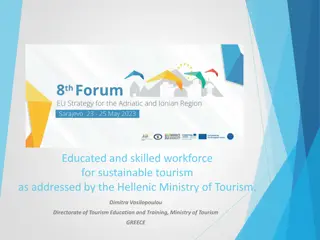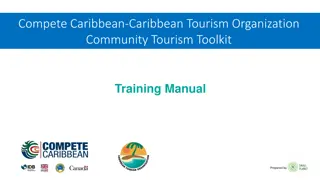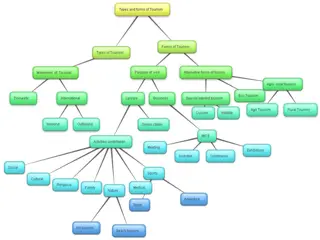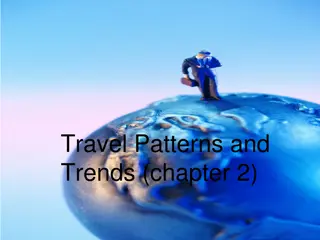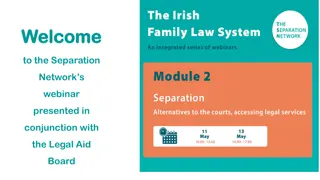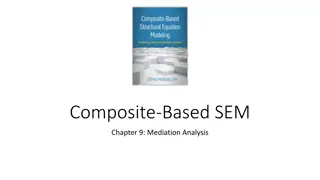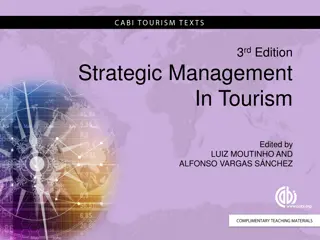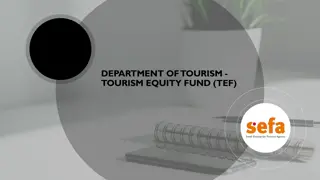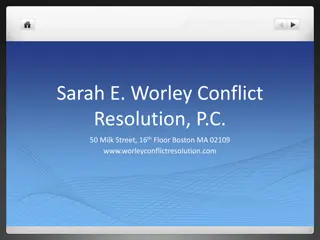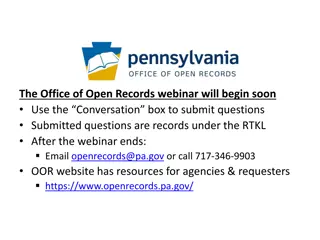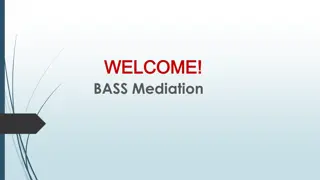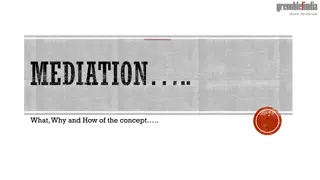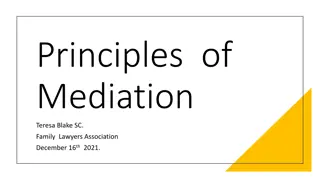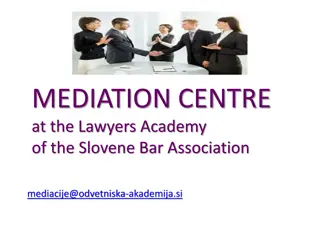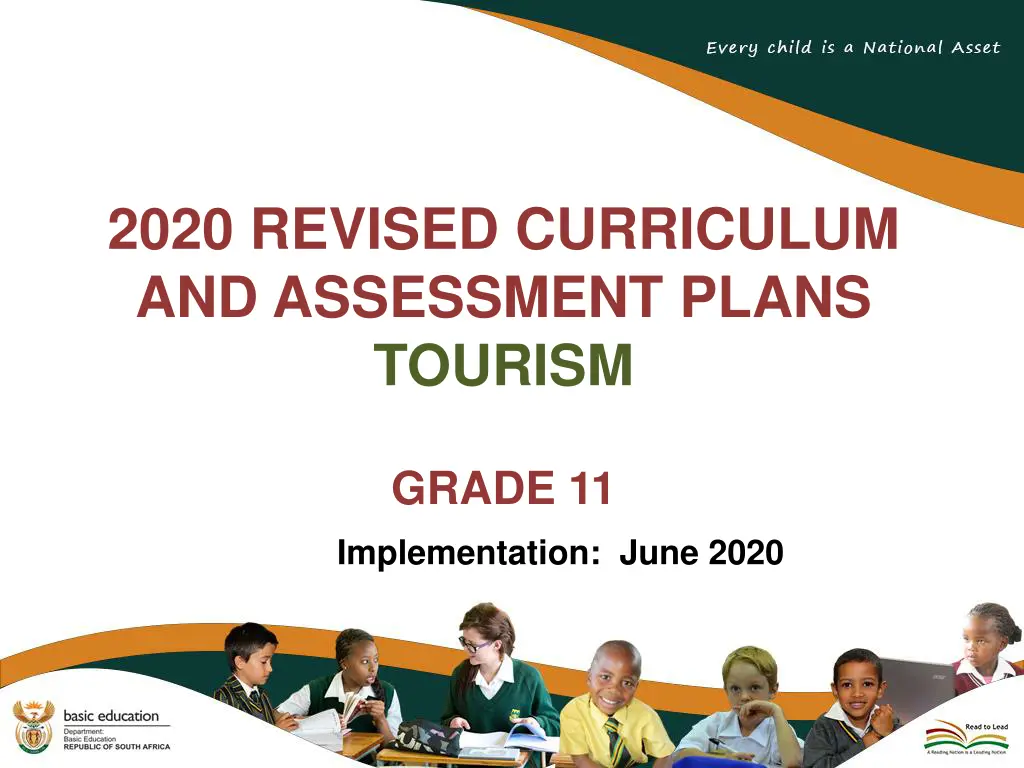
Revised Curriculum and Assessment Plans for Grade 11 Tourism
Explore the amendments to the content overview, annual teaching plan, and school-based assessment for Grade 11 Tourism, implemented in June 2020. Covering essential skills and preparing learners for the future, this presentation outlines the key changes to the curriculum.
Download Presentation

Please find below an Image/Link to download the presentation.
The content on the website is provided AS IS for your information and personal use only. It may not be sold, licensed, or shared on other websites without obtaining consent from the author. If you encounter any issues during the download, it is possible that the publisher has removed the file from their server.
You are allowed to download the files provided on this website for personal or commercial use, subject to the condition that they are used lawfully. All files are the property of their respective owners.
The content on the website is provided AS IS for your information and personal use only. It may not be sold, licensed, or shared on other websites without obtaining consent from the author.
E N D
Presentation Transcript
2020 REVISED CURRICULUM AND ASSESSMENT PLANS TOURISM GRADE 11 Implementation: June 2020
Presentation Outline 1.Purpose 2.Amendments to the Content Overview for the Phase; 3.Amendments to the Annual Teaching Plan; 4.Amendments School Based Assessment (SBA) 5.Conclusion
1. Purpose To mediate the amendments of the trimmed and re-organised 2020 Annual Teaching Plan including School Based Tourism , Grade 11 for implementation in June 2020 as stipulated in Circular S2 of 2020. To ensure that meaningful proceeds during the remaining teaching time as per the revised school calendar. To assist teachers with guided pacing and sequencing of curriculum assessment. Assessment for teaching content and
1. Purpose (continued) To enable teachers to cover the essential core content /skills in each grade within the available time. To assist teachers with planning for the different forms of assessment. To ensure learners are adequately prepared for the subsequent year/s in terms of content, skills, knowledge, attitudes and values
2. Amendments to the Content Overview for the Phase
Summary: Amendments to the Content Overview for the Phase Grade 10 Grade 11 Grade 12 *Trimmed * Reorganised *No amendment Tourism Sectors Introduction to Tourism Types of tourists and tourist profiles The different modes of transport Accommodation establishments: facilities and services offered by each type; The South African grading system Food and beverage establishments The attraction sector Structure of the South African tourism industry Tourism Sectors Transport services in South Africa Airports, airlines and airport operations; technology at airports to facilitate travel Tourism bus industry Tourism train industry Luxury cruise liner industry Car rental Job and career opportunities in the tourism industry Requirements and inherent qualities needed to work in the tourism industry Entrepreneurial opportunities Tourism Sectors Professional image of staff in the tourism industry Conditions of employment Contract of employment Purpose and value of a code of conduct
Summary: Amendments to the Content Overview for the Phase Grade 10 Grade 11 Grade 12 *Trimmed * Reorganised *No amendment Map Work and Tour Planning Location of world-famous icons on a colour map of the world Tour plans and route planning Compiling a day-by-day itinerary Compiling a tour budget Health and safety Travel documentation World time zones Map Work and Tour Planning Map Work and Tour Planning Tour itinerary Concepts: itinerary, logical tour planning, scheduled tours Factors to consider when planning an itinerary Different types of itineraries Writing an itinerary Location of the following on a colour map of the world. Removed : South East Asia and Pacific Western Europe, Eastern Europe, Central Europe, Northern Europe Scandinavian and Nordic countries Americas: South America (Brazil) Australasia: Australia, New Zealand, the island of New Guinea, neighboring islands in the Pacific Ocean Distance indicators and distance tables. Combined Week 3, 4 and 5 into 1 week Moved from Term 3 Week 7 to Term 4 Week 3
Summary: Amendments to the Content Overview for the Phase Grade 10 Grade 11 Grade 12 *Trimmed * Reorganised *No amendment Tourism Attractions Tourism Attractions Tourism Attractions Tourist attractions in the provinces of South Africa. ONLY THREE provinces out of the 9 provinces to be studied: Your own province plus ;ANY 2 other provinces. Combined Week 1; 2, 3, 4, 5 and 6 into 4 weeks World-famous icons and attractions Main tourist attractions in the SADC countries: (*World Heritage Sites) attractions Present in a tourism context Location on a map, reasons why it is considered a top tourist attraction, activities, pictures/photos, relevant tourist information Angola: Kissama National Park Botswana: Okavango Delta, The Tsodilo Hills* Democratic Republic of the Congo (DRC): Virunga National Park*, Lesotho: Katse Dam and Lesotho Highlands Water Project, Sani Pass Madagascar: Royal Hills of Ambohimanga* Mauritius: Grand Baie, Mozambique: Lake Niassa, Bazaruto Archipelago, Island of Mozambique* Namibia: Fish River Canyon, Etosha National Park, Namib Desert Malawi: Lake Malawi Seychelles: Beaches and leisure activities on the islands Factors contributing to the success of a tourist attraction South African National Parks (SANParks) South African fauna and flora Removed Luxury private game reserves National botanical Gardens
Summary: Amendments to the Content Overview for the Phase Grade 10 Grade 11 Grade 12 *Trimmed * Reorganised *No amendment Sustainable and Responsible Tourism Sustainable tourism concepts (The need for sustainable practices in tourism businesses ) Three pillars of sustainable tourism (planet, people, profit) Responsible tourism concepts (Negative impact of tourism on environment and host communities) Good environmental practices Global warming and the tourism industry (How tourists can minimize their carbon footprint ) Sustainable and Responsible Tourism Sustainable and Responsible Tourism Three pillars of sustainable tourism Responsible tourists Codes of conduct for tourist behaviour Demand for responsible tourism. Role players in responsible and sustainable tourism Not applicable Term 3 Week 2: Move Term 3 Week 4 to Term 3 Week 2 Term 3 Week 3: Move Term 3 Week 5 to Term 3 Week 3
Summary: Amendments to the Content Overview for the Phase Grade 10 Grade 11 Grade 12 *Trimmed * Reorganised *No amendment Domestic, International Tourism The Domestic Tourism Growth Strategy (2012 2020) The five-domestic travel market segments according to the Domestic Tourism Growth Strategy Regional SADC member countries Trimmed: TWO topics Role of the Regional Tourism Organisation of Southern Africa (Retosa) Gateways: and the major airport, harbour and border post of the country (tourism context) Regional and Domestic, Regional and International Tourism Global events and unforeseen occurrences of international significance Forms of payment when travelling internationally Term 2 Week 7:Move Term 3 Week 1 to Term 2 Week 7. Domestic, Regional and International Tourism Domestic tourism Concepts Benefits for South Africa Domestic tourism statistics Payment methods and technology for payment in South Africa tourism. The Foreign market share statistics regarding inbound international tourism Term 2 Week 8:Move Term 3 Week 2 to Term 2 Week 8
Summary: Amendments to the Content Overview for the Phase Grade 10 Grade 11 Grade 12 *Trimmed * Reorganised *No amendment Culture and Heritage Tourism Culture and heritage Combined Term 4 week 1 and 2 week into 1 week Concepts, elements and importance of heritage Elements of culture- such as architecture, interiors Heritage sites Cultural heritage sites, such as monuments, museums, historical buildings, graveyards, paleontological objects Natural heritage sites, such as mountains, waterfalls, caves The difference between local, provincial and national heritage sites The heritage plaque which identifies sites declared national heritage sites Culture and Heritage Tourism Culture and Heritage Tourism World Heritage Sites Concepts The role of UNESCO: logo and main function Types of World Heritage Sites: natural and cultural A description of all the World Heritage Sites in South Africa Term 3 Week 4: Move Term 3 Week 6 to Term 3 Week 4 South African cultural uniqueness South African heritage bodies Combine Term 2 Week 3 and 4 into one week Move Term 2 Week 5 to Term 2 Week 4
Summary: Amendments to the Content Overview for the Phase Grade 10 Grade 11 Grade 12 *Trimmed * Reorganised *No amendment Foreign Exchange Foreign Exchange The concepts strong and weak rand Currency conversions Differentiation between bank selling rate (BSR) and bank buying rate (BBR) The effect of exchange rates on international tourism Exchange rates fluctuations Foreign exchange and its value to the South African economy Trimmed: Concept: informal fluctuations Conversion of currencies Move Term 2 Week 6 to Term 2 Week 5 Move Term 2 Week 7 to Term 2 Week 6 Term 2 Week 6: Combine Week 6 & 7 of Term 2 into one week.
Summary: Amendments to the Content Overview for the Phase Grade 10 Grade 11 Grade 12 *Trimmed * Reorganised *No amendment Communication and Customer Care Communication (verbal and written) Communication technology (equipment) Service excellence: concepts, importance, advantages, consequences and recommendations Removed Service excellence The consequences of poor service delivery Recommendations for improvement of poor service delivery Communication and Customer Care Global distribution systems Customer care for foreign tourists Customer complaints Managing quality service Communication and Customer Care Methods to obtain customer feedback and measure customer satisfaction Reasons why service differs from one organisation to another Measuring customer satisfaction Impact of the service delivered by an organisation on its business profitability Term 3 Week 5: Move Term 3 Week 7 to Term 3 Week 5
Summary: Amendments to the Content Overview for the Phase Grade 10 Grade 11 Grade 12 *Trimmed * Reorganised *No amendment Marketing Marketing Marketing Marketing South Africa as a tourism destination Promotional/advertising Techniques Moved from Term 3 Week 8 to Term 4 Week 1 Marketing of tourism products, services and sites Removed: Market research: Factors to consider during the marketing process Marketing budget Moved from Term 3 Week 9 to Term 4 Week 2
3. Amendments to the Annual Teaching Plan
Summary: Reorganisation of content topics Topics trimmed Tourism attractions Regional Tourism Foreign Exchange Communication and Customer Care Topics reorganised Culture and Heritage Tourism Foreign Exchange Tourism attractions Communication and Customer Care
Summary: Amendment to the weighting of content topics Weighting of content topics for the November Examination was amended to align with the trimming that was implemented to align with the days available for teaching and learning.
Gr 11 Summary: Content/Topics Amended Content/Topics Term Amendment Term 2 Week 3 Culture and Heritage Tourism The South African cultural uniqueness Reorganize: Combine Term 2 Week 3 and 4 into one week. Term 2 Week 4 Culture and heritage Tourism South African heritage bodies Reorganize: Move Term 2 Week 5 to Term 2 Week 4. Term 2 Week 5 Foreign exchange Foreign exchange and its value to the South African economy Removed: Concept: informal fluctuations Reorganized: Move Term 2 Week 6 to Term 2 Week 5 Term 2 Week 6 Foreign exchange Foreign exchange and its value to the South African economy Reorganized: Move Term 2 Week 7 to Term 2 Week 6
Gr 11 Summary: Content/Topics Amended Content/Topics Term Amendment Removed: Regional tourism: Role of the Regional Tourism Organisation of Southern Africa (Retosa) Gateways: and the major airport, harbour and border post of the country (tourism context) Domestic, regional and international tourism Regional tourism Term 3 Week 1 Reduced content to: Botswana: Chobe National Park Democratic Republic of the Congo (DRC): Kahuzi-Biega National Park*, Salonga National Park * Lesotho: Maluti Mountains, Basotho pony trails, Madagascar: Tsingy de Bemaraha Strict Nature Reserve* Reorganised: Moved from Term 3 Week 3 to Term 3 Week 2: Lesotho: Katse Dam and Lesotho Highlands Tourism attractions Main tourist attractions in the SADC countries Term 3 Week 2
Gr 11 Summary: Content/Topics Amended Content/Topics Term Amendment Reduced content to: Mauritius: Chamarel Falls and the coloured earths of Chamarel, Tamarin Bay Mozambique: Cahora Bassa Dam Namibia: Skeleton Coast Malawi: Liwonde National Park Tourism attractions Main tourist attractions in the SADC countries Term 3 Week 3 Reorganised: Moved from Term 3 Week 4 to Term 3 Week 3: Mozambique: Lake Niassa, Bazaruto Archipelago, Island of Mozambique* Namibia: Fish River Canyon, Etosha National Park, Namib Desert Malawi: Lake Malawi
Gr 11 Summary: Content/Topics Amended Content/Topics Term Tourism attractions Main tourist attractions in the SADC countries Amendment Reduced content to: Swaziland: Royal Swazi Sun Hotel, Mkhaya Game Reserve Tanzania: Stone Town of Zanzibar*, Ngorongoro Conservation Area* Zambia: Livingstone, Kafue National Park Zimbabwe: Hwange National Park, Mana Pools National Park* Reorganised: Moved from Term 3 Week 5 to Term 3 Week 4: Seychelles: Beaches and leisure activities on the islands Moved from Term 3 Week 6 to Term 3 Week 4: Zambia: Victoria Falls and Zambezi River, Lake Kariba Zimbabwe: Victoria Falls and Zambezi River, Lake Kariba, The Great Zimbabwe Ruins*, Matopo Hills* Term 3 Week 4
Gr 11 Summary: Content/Topics Amended Content/Topics Term Amendment Term 3 Week 5 Communication and customer care Customer care for foreign tourists Removed from Term 3 Week 10: Global distribution systems Central reservation systems Removed from Term 4 Week 1: Customer care for foreign tourists: Ways in which the tourism industry in South Africa will benefit from excellent customer care Reorganised: Moved from Term 4 Week 1 to Term 3 Week 5 Communication and customer care Customer complaints Reorganised: Moved from Term 4 Week 2 to Term 3 Week 6 Term 3 Week 6
Gr 11 Summary: Content/Topics Amended Content/Topics Term Amendment Term 3 Week 7 Communication and customer care Managing quality service Reorganised: Moved from Term 4 Week 3 to Term 3 Week 7 Reorganised: Moved from Term 3 Week 8 to Term 4 Week 1 Marketing Different types of promotional/ advertising techniques used in the tourism industry Marketing The marketing budget Term 4 Week 1 Reorganised: Moved from Term 3 Week 9 to Term 4 Week 2 Term 4 Week 2 Term 4 Week 3 Map work and tour planning The tour itinerary Reorganised: Moved from Term 3 Week 7 to Term 4 Week 3
4. Amendments School Based Assessment (SBA)
Summary: Revised Programme of Assessment Term 1 Term 2 Term 3 Term 4 Task 1 Task 3 SBA Tourism Skills Assessment Task 25% September Test 200 marks 100 % Term 1+2+3 = 200 200 2 = 100 Task 2 March Test 75% PAT 1 100 November Examination 200 400 4 100 100 0 100
Summary: Revision Final Nov Examination Structure Section Content Mark allocation Short questions (All topics) A 40 Map work and tour planning Foreign Exchange B 20 Tourism attractions Culture and Heritage tourism Marketing C 40 Tourism Sectors Sustainable and Responsible Tourism D 30 Domestic, regional and international tourism Communication an customer care E 20 Convert total to 200 150
Summary: Revised Practical Assessment Task (PAT) The new format for the Grade 11 PAT (S4 CAPS) is postponed to 2021 for implementation. The amendment is based on the time that is available for teaching an learning. Social distancing requirements are to be adhered to. An exemplar Grade 11 PAT will be provided that is based on the same format and criteria used in the past. PAT 100 marks Weighting of marks not affected. SKAV assessed are standardised. Marking completed: Term 4
Conclusion SBA A uniform, standardised approach is used across Grade 10-12 in Tourism. No important aspect of the Grade 12 curriculum is compromised. Re-organisation, maintains and supports the foundational principles of the National Curriculum Statement (NCS) as stated for Tourism. The allocated time on the revised ATP is realistic to teach content/ activities and assessment and are aligned to the available time. The ATP exposes learners to a variety of forms of assessment. The amended School Based Assessment (SBA) aligns to the content and time available. Informal assessment focuses on the principles of assessment for learning in the context of specific or a combinations of topics. Informal activities prepare the learner for the formal assessment and final NSC examinations. PAT The amendment for the Gr 12 PAT aligns to the time available. Social distancing requirements are adhered to.
Contact Details Name: Magda van Pletzen CES: Services Subjects Department of Basic Education Tel: 0828264217 Email: vanpletzen.M@dbe.gov.za


